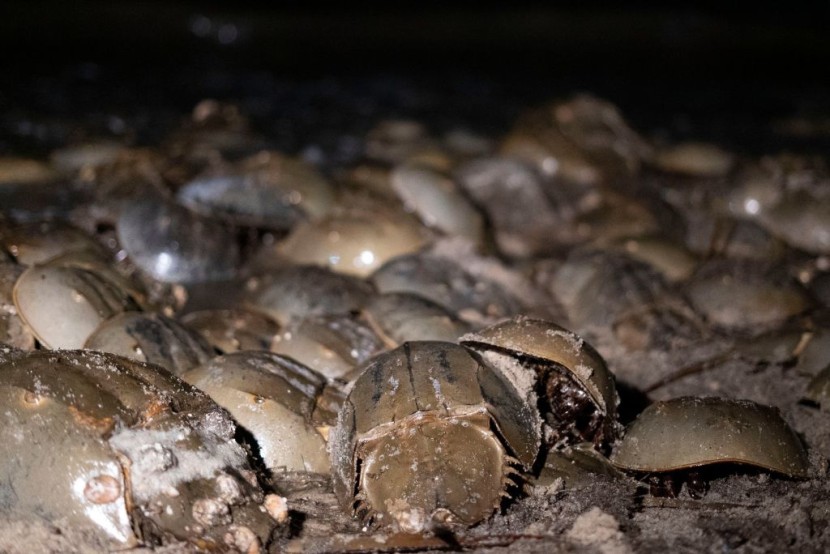A primitive sea creature that is a key component in the creation of essential medications and that inhabits the tidal mudflats of the East Coast stands to gain from new protection regulations.
The prized blue blood of the crabs, helmet-shaped creatures that have lived in the ocean and tidal pools for more than 400 million years, is used by manufacturers of drugs and medical devices to test for potentially harmful contaminants. While some of the animals' blood is removed before being reintroduced to the habitat, many of them bleed to death.
The Red Knot
The red knot is a dwindling bird species that depend on horseshoe crabs, but conservationists who have been working to conserve it for years worry that the regulations are still insufficient, according to the Associated Press.
More animals should survive the treatment thanks to recent adjustments to the handling instructions, according to officials.
The creatures, which are more closely related to land-dwelling invertebrates like spiders and scorpions than they are to genuine crabs, are diminishing in parts of their territory along the East Coast.
Due to the animal's importance to coastal ecosystems and the fact that it is also harvested for bait in the commercial fishing industry, the harvest of horseshoe crabs has become a crucial concern for environmentalists in recent years.
A diminishing subspecies of the red knot bird, a migratory shorebird with rust-colored plumage that is designated as vulnerable under the Endangered Species Act, depends critically on the eggs of crabs.
Read also: Birds Create Colors That Don't Fade Using Nanostructures And Light, Say Researchers
How the Blood of a Horseshoe Crab Can Help
The blood of horseshoe crabs can be processed into LAL, or Limulus amebocyte lysate, which is used to identify pathogens in essential medications like injectable antibiotics.

For utilization by biomedical businesses, fishermen catch the crabs by hand or with trawlers. After their blood is removed, the white blood cells' proteins are processed. It takes dozens of crabs to create enough blood, which contains immune cells susceptible to pathogens, to fill a single glass tube.
On the East Coast, only five businesses with federal licenses process horseshoe crab blood. Activist groups frequently claim that the blood is worth $15,000 per quart (liter), although some professionals in the field claim that this estimate is impossible to confirm.
About 15 percent of the crabs perish during the bleeding process. This resulted in the death of around 112,000 crabs in 2021. More than six times as many were lost in the horseshoe crab fishery, which is used to catch eels and sea snails as bait.
Nevertheless, the fisheries commission authorized new best management practices in May for the handling and harvesting of crabs by the biomedical industry. These include limiting exposure to sunshine and keeping crabs cold and moist.
The Gulf of Maine to Florida is the geographic range of the Atlantic horseshoe crab, a species that is fished off the East Coast. The species is classified as "vulnerable" by the International Union for Conservation of Nature based on a 2016 assessment.
The Delaware Bay, an estuary of the Delaware River between Delaware and New Jersey, is one of the most crucial environments for horseshoe crabs. Red knots eat in the bay where the crabs breed.
The quantity of horseshoe crab eggs in the bay is nowhere like what it was in the 1990s. The National Park Service reports that the number of the vulnerable subspecies of rufa red knot has decreased by 75% during the 1980s.
To be able to recuperate, the birds require significant protection of the horseshoe crab eggs, according to Niles. He keeps tabs on the condition of horseshoe crabs and red knots and has set up a group called the Horseshoe Crab Recovery Coalition to promote conservation measures.
From Florida to Maine, horseshoe crabs have been gathered over the years for use as bait and medicine, although the biggest harvests are in Maryland, Delaware, Massachusetts, and Virginia. Federal fishery statistics show that in 2021, the crabs' total dock value was around $1.1 million.
Related article: Evolution Of Island Birds May Be Predictable: How Birds Become Flightless








